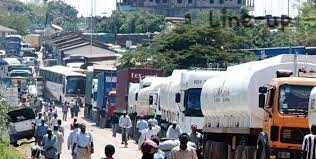Kenya and Uganda have made a decision to construct a marshalling yard at the Malaba border, in order to decongest one of the region’s busiest transboundary crossings.
Officials confirmed this, admitting that traffic had become a non-tariff obstacle to trade between the two countries.
The Kenya Ports Authority (KPA), Kenya Revenue Authority (KRA), and Uganda Revenue Authority (URA) have decided to speed up the yard’s construction in order to keep up with advances in paperless cargo clearance.
While touring Mombasa port this past week, URA officials led by Commissioner-General John Musingizi and KPA acting managing director John Mwangemi agreed to work on the Single Customs Territory and reduce bottlenecks to business between the two countries.
Paperless transactions
“URA is reviewing its processes to increase trade volumes and to achieve that, KPA and KRA remain critical partners by ensuring clearing agents within EAC have been granted the rights to relocate and carry out their duties in any of the partner states as part of a strategy to improve the flow of goods and curb dumping,” said Mr Musingizi.
According to the Mombasa port and Northern Corridor service charter, use of the Single Customs Territory (SCT) system and adoption of paperless transaction as a result of Covid-19 pandemic, traders are saving up to $300 per transaction through joint clearance of cargo by EAC partner states at Mombasa port.
KPA is already working on plans to speed up construction of the Malaba facility.
“The marshalling yard’s facilities will include an administration block, a welfare centre, ablution block and a clinic,” said Mr Mwangemi.
The construction of the yard has begun on a 22-acre land parcel at a cost of about $15 million.
Currently, trucks park by the roadside as they await clearance from the border officials, creating a gridlock that inconveniences other motorists.
